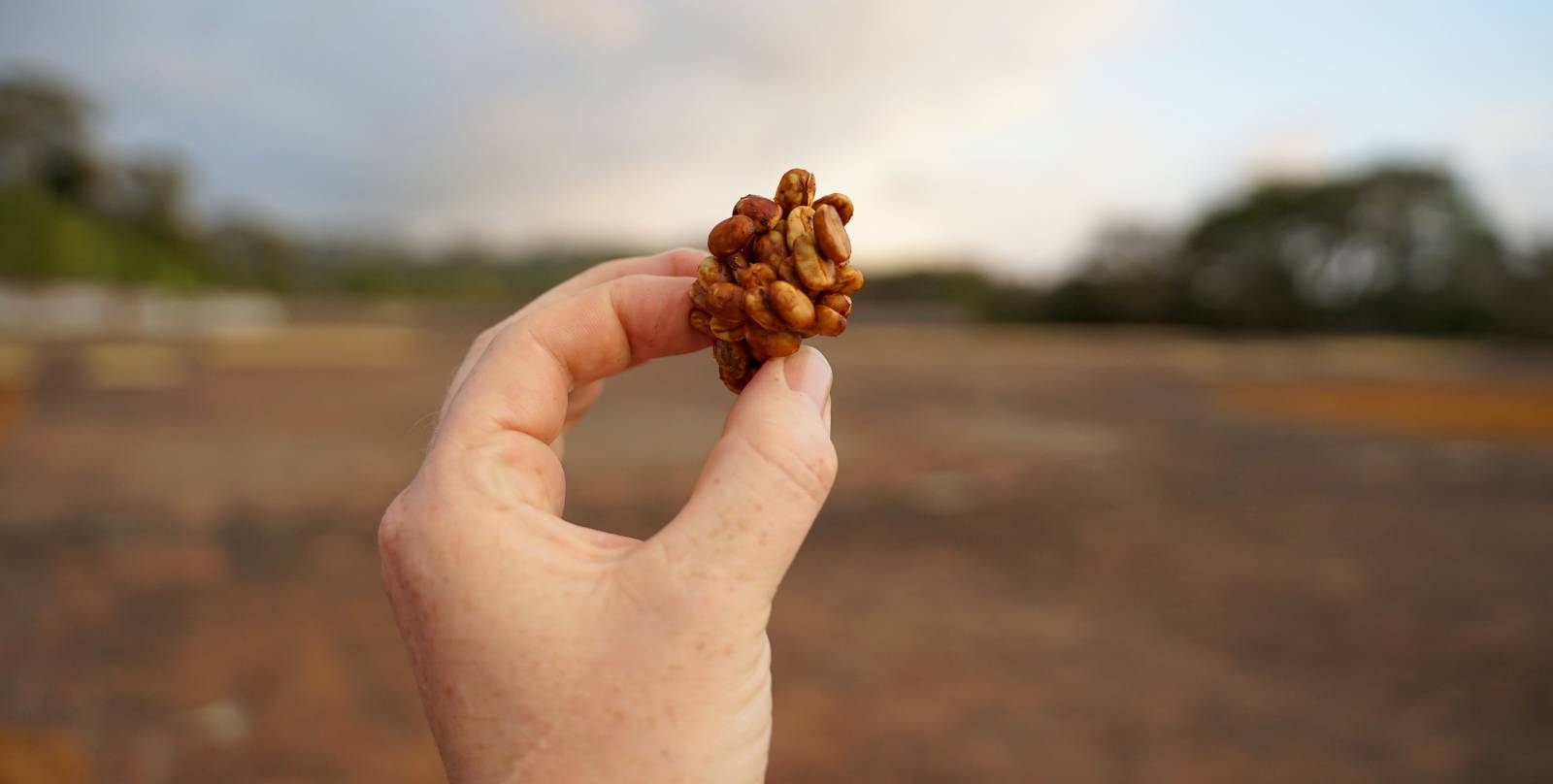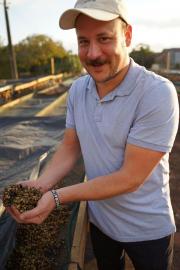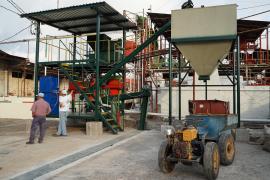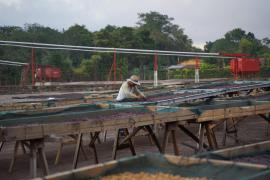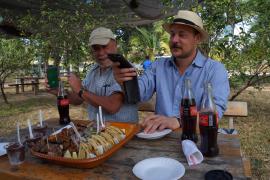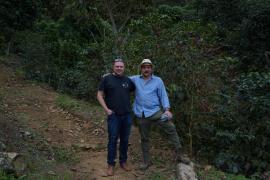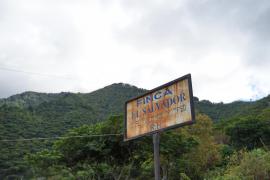We travelled to El Salvador to explore unique coffee opportunities. Our partner Rodolfo Ruffatti Batlle introduced us his processing experiments with kombucha. He shares more detail in this interview.
El Salvador is an origin that has a permanent place in the Nordbeans offer. The reason is a close partnership with producer Rodolf Ruffatti Batlle. In January 2019 we visited him personally and it was a really unforgettable week. Rodolfo focuses on post-harvest coffee processing. This year we agreed that he will try to produce something special from the cherries harvested on their dad's farm (Finca El Salvador) in addition to the traditional natural lot we purchase for our Christmas offering. The result is the world premiere of Finca El Salvador Kombucha. In an interview given to the blog www.nordbeans.cz Rodolfo describes his proceedings and also mentions his work with kefir crystals. In both cases, the principle of processing is to add other substances to honey-processed coffee. The added substances that work with sugars on the pulp of coffee will subsequently affect its taste. It is not possible to compete with them at world championships, but it is an extremely interesting trend in the world of speciality coffee. With us, you can now be the first in the world to test the outcome of this year's experiment – there's only 24 kg of the coffee in the world.
Why did you choose kombucha and water kefir for special lots of Finca El Salvador?
Because it sounded cool. Both ingredients themselves produce a lot of sour fruit drinks, so we hoped they would have a similar effect on coffee. We chose these two because both are symbiotic relationships of yeast and bacteria. If you want to read more, see S.C.O.B.Y. (Symbolic culture of bacteria and yeast).
So what was your idea of the processing process?
Our concept is based on the fact that yeast and bacteria together create a more comprehensive result. Generally, when fermenting yeast convert sugar to alcohol. The bacteria then take this alcohol and convert it into acids. In particular, the kombucha is resistant enough to survive in highly acidic environments. Instead of risking ending an alcoholic coffee full of dead beans, we bet that with this combination we end up with a coffee that has more intense or modified acidity.
Is this, then, your reaction to the trend of ingredients added to coffee during processing?
Recently, we have noticed a lot of hype about adding yeast to coffee during processing. But the more intensive the fermentation, the less chance the yeasts are resistant to the acid environment to survive. When we look at the fermentation research published by Nestlé together with the Vrije Universiteit Brussel, we find that the longer the fermentation process, the better the taste of coffee. At the same time, however, the more dominant are lactic bacteria. We still do not know how long the added yeast will last and whether it is preferable to use local robust fermentation microorganisms that have a greater tolerance to the acid environment.
That's why we thought it best to use these two robust communities of microorganisms. First, they had a good chance to survive in an acidic environment. And we also know that they themselves produce delicious drinks.
So what kind of kombucha did you use?
We prepared two types of kombucha. One of them classic, which is made of black tea with sugar. Then we got from a friend a special kombucha called jun, which has the ability to survive in green tea with honey. Honey is usually considered an antibacterial environment, so it is a truly rare organism. Then we mixed the two.
What substances in kombucha are good for coffee?
Perhaps most importantly, in kombucha is Saccchoaromyes cerevisiae, which is among other important yeast for brewing beer and wine processing. Along with it with the kombucha you get more bacteria. As a whole, the kombucha needs sugar and tannins to survive. Coffee pulp provides both in sufficient quantities.
So how did the actual processing proceed?
This year we tried to ferment honey processed coffee as mentioned earlier. We peeled cherries so our microorganisms had direct access to sugars in the pulp. The aim was for microorganisms to consume this pulp and expose the beans to fermentation. In practice, we prepared an infusion to pour the peeled cherries and leave them in the fermentation tank for about 1 week. We then dried the coffee in the standard way at our Buena Vista mill.
